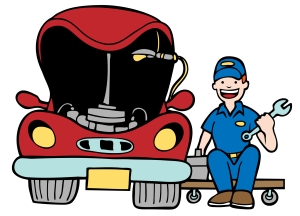Going out in public is often riddled with obstacles for people with disAbilities. While this is largely due to inaccessible structures like stairs and narrow doors, so many unnecessary barriers are created by able-bodied people who place themselves where they shouldn’t be. That’s not to say that someone with a disAbility has special privileges. Rather, reserved access locations are intended to give people with disAbilities equal opportunities to experience the world around them. Here are some accessible places where able-bodied people should not be:
Handicap Parking Spaces
By far, the most frustrating obstacle put in place by able-bodied people is parking illegally in handicap accessible parking spaces. Though often thought that handicap parking is one of the “perks” of having a disAbility, the reality is that it’s a necessity, not a convenience. Most people with a disAbility get around in a wheelchair accessible vehicle that’s adapted with either a foldout/in-floor ramp or a lift so they can easily get in and out of their vehicle. If they don’t have access to a parking spot with enough space, there is literally no (safe) way for them to get out of their vehicles, which directly prevents them from getting where they need to go.
There are countless times when entering many parking lots that you’ll find that the only accessible spots are occupied by someone who doesn’t have a proper license plate or a permit. It is also common that vehicles park illegally in the white/blue lines next to the accessible spots making it impossible for the owner to access their vehicle which leaves them stranded.
Parking illegally in a handicap spot denies an important means of access to all people who legitimately need the accessible spaces. Able-bodied people have an entire parking lot full of spaces to choose from; disabled people usually only have a few accessible spaces. The accessible spaces are not there for the convenience of people who are lazy, or for people who claim they just needed to run into the store for a second. Illegal use of any part of a accessible parking space is inexcusable in any situation.
Accessible restroom stalls
While using the restroom at multiple locations you will find that most stalls are empty except the accessible one. Able-bodied people see the big, roomy bathroom open and are drawn to it; it’s understandable not wanting to be cramped into a small stall. However, using accessible bathroom facilities, especially when others are available, does demonstrate that people with disabilities aren’t in society’s conscience as being just as likely to be out in public as non-disabled people.
If every other stall is taken, it’s obviously okay to use it. But since people with disAbilities cannot physically get into regular sized restroom stalls, it’s not asking too much for able-bodied people to leave the one accessible bathroom option open when there are five other empty ones that are readily available.
Accessible shower stalls
Much like accessible bathroom stalls, there’s usually only one accessible shower facility in places like shared college dormitory restrooms and gym locker rooms. The accessible stalls are roomier and they often have a fold-down seat attached to the wall. Although this may be tempting for non-disabled people who want a shower with room to dance around or have a place to rest tired feet the accessible facilities are not intended for the convenience of able-bodied people.
Apparently, this is a hard concept for people. Frequently you’ll discover that every shower stall is empty except for the accessible one. Unfortunately it seems that able-bodied people see accessible showers as a luxury, rather than realizing that they are a necessity for disAbled people.
Accessible dressing rooms
Most stores have a large dressing room that qualifies as “accessible.” Unfortunately, they are rarely, if ever, properly labeled or guarded by store employees. Hence, some of the worst offenders of able-bodied people who block public access are the ones who use accessible dressing rooms.
Some people who actually need the accessible stall have to wait for 15-20 minutes (give/take) while able-bodied people take their time in the only accessible dressing room, even though several other regular dressing rooms are available. Able-bodied people need to realize that they have fifteen dressing rooms to choose from while people with disAbilities, that actually need an accessible room, only have one option.
Respect Accessible Spaces
If you don’t have a disAbility, then next time you just have to grab a gallon of milk or try on a bunch of shirts, please reconsider and don’t take up the only reserved accessible places. Leaving accessible places open for the people who truly need them is a super simple way to promote inclusion and acceptance of the disAbled community.

